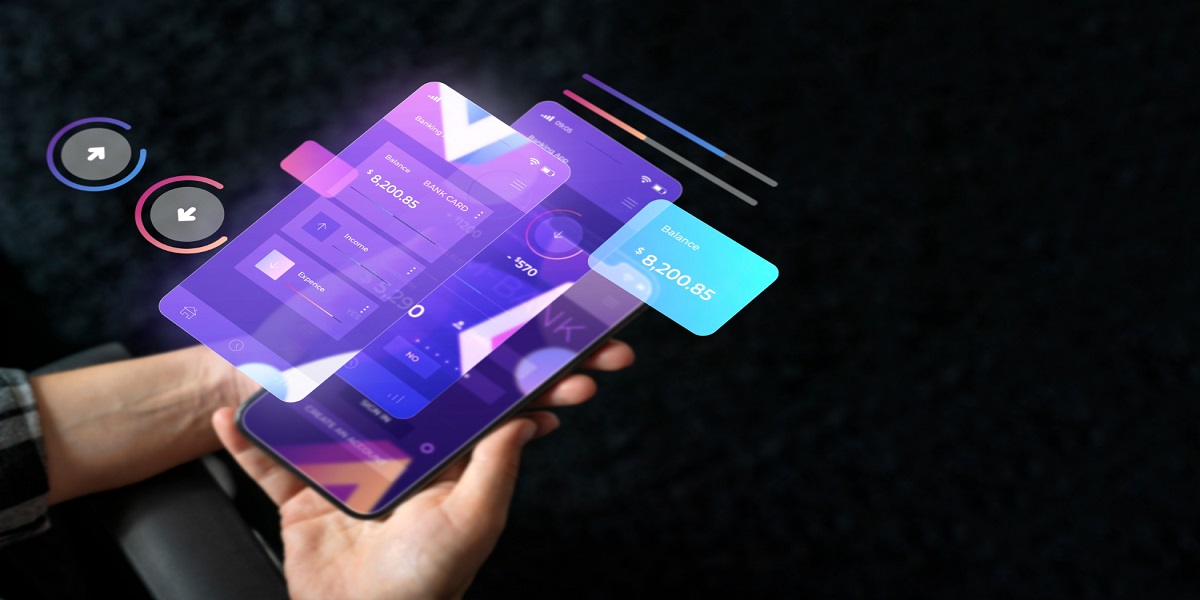
How To Create A Market Leading Education Mobile App?
- By Jermaine Trotman
- 25-01-2021
- Mobile Apps
Although the author of the bestselling book "Black Swans," Nassim Nicholas Taleb, believes that the pandemic was predictable, it stunned industries throughout the world.
The pandemic hampered industries like retail, but web and mobile technologies such as Cloud computing, AI, and 5G helped the economic engine keep running. Changes in the economic scenario made many businesses go digital and serve their customers at times when offline interaction was nearly impossible.
The best example of businesses utilising the power of technology to scale their business is the e-learning platforms. They are one of the most positively affected entities amid this coronavirus pandemic. For example, Coursera achieved 10.3 million new users during the first month of the coronavirus pandemic. It is a 644% hike as compared to the same period last year.
The economic indicators of online education market growth
According to a market survey conducted by research and markets, the global online education market will grow to $350 billion by 2025. The report further states that the introduction of flexible learning technologies triggered the education technology sector's growth. The report is collected in December 2019. Therefore, it can be assumed that growth will be higher than estimated.
Choose your market niche
The education mobile apps are of several types such as learning management systems, self-learning apps, apps for educational institutions, etc. Before an app development, you need to decide the kind of app you are going to launch.
Also, it would help if you decided on your industry niche. Will your app be a language learning app or an app for a particular subject or other learning purposes. You will have to finalise your niche before moving forward because it will help you understand the required technologies and feature set for your education mobile app. I would suggest you look for your closest competitors and learn from them.
Know the learning challenges your customers currently face
Every technological implementation is intended to mitigate the current challenges the target customers face. For education mobile apps, the challenges can be a lack of accessibility to quality education due to the pandemic.
Moreover, the target audience's general struggles should be considered concerning their specific characteristics such as geographical location, economic or cultural background, etc.
Features that you should incorporate into your edtech app
Deciding the features, you would want to incorporate in your education mobile app is crucial before choosing the technology stack. But, it would help if you considered what actually can be achieved with the available technologies.
You cannot ask for a feature that is impossible to implement with the available technologies. Following are the crucial features you can incorporate into your education mobile app:
Assignment and assessment
Your education mobile app will only be useful if you integrate the classroom education attributes in it. The teachers should be able to issue assignments to the students via the app itself. Furthermore, the app should enable teachers to track and monitor the progress of assignment submissions. The assessment analytics will also be available within the app.
Social Networks integration
This feature enable uses/learners to share information about the content available on your education mobile app. It will eventually act as a marketing tool for your app's growth and improve your brand awareness. Also, the learners will share their achievements and progress with their friends on social networks.
Live streams and videos
E-learning comes with the challenge of making educational content more interactive and interesting for the learners. The best way to do this is to implement video streaming capabilities into your education mobile app. Embedding video streaming capabilities will allow educators to create interactive educational content.
Communication
Learning is effective when done with collaboration. Based on the type of education app you're launching, you can feature your app with several useful collaboration features. Instant messaging, audio and video conferencing, and forums are among the most popular collaboration features for education mobile apps.
Personal notes
Being capable of taking notes during the learning sessions will surely help learners memorise things. Notes feature more effective when it allows learners to take notes in text form as well as screenshots.
Gamification
A few years ago, gamification was considered superficial for education mobile apps, but now, it has proved to motivate the learners. I recommend you implement a series of accomplishment badges in accordance with the learner's progress throughout the course. It also encourages learners to share thier achievements with their peers.
Choose the right technology stack
Now when you've chosen the features you would want to incorporate into your education mobile app, it's time to pick the right technologies for your app. My advice is to keep the future expansions of app features in mind while deciding the technologies you would want to proceed with. Some of the most popular technological advancements in the education technology industry are artificial intelligence, machine learning, and augmented reality.
The required technologies for education mobile app will almost be identical to an ordinary mobile app. For example, Java, Kotlin, Objective-C, and Swift will be the best choices for programming languages, and so on. However, features like video streaming need to be paid individual attention.
For the video streaming feature, most developers use HLS (HTTP live streaming) technology. HLS makes the streaming seamless even with low bandwidth networks by modifying videos into several segments, attributing time duration to each of them. So, during the streaming, the browser only makes HTTP requests for one segment at a time.
This technology significantly reduces the video downloading time and makes it possible for the learners to stream video seamlessly even with network fluctuations.
Rest, your technology solution provider should be able to guide you through the right technology architecture according to your preferred set of features.
Education mobile app monetisation strategy
It is imperative to have an optimum strategy to monetise an education mobile app. Your strategy should be so that it doesn't hamper the user experience and at the same time flows money in. Most of the education mobile apps offer paid content, which is a straightforward approach to monetise an education mobile app. Here are some of the most suitable alternative methods to monetise your app:
Free trial
This education mobile app monetisation method involves offering the full or partial range of content to your new customers for a limited time. Softwares or mobile apps that use this method often provide a free trial for 2-3 weeks. After that period, the users are asked to pay for a subscription to get the access back.
Freemium
This learning model via app provides the users with free access to limited quantities of the content available in the app. The users need to subscribe to get access to premium content. This model unveils your app features and ability to provide educational content to the learners. Businesses with this model often get exposure to a large number of target users.
Advertisements
Selling data-driven advertisements within an app is a ubiquitous app monetisation model. You either can do it independently, or you can operate via a mobile ad partner. However, this model can backfire as the mobile ads are annoying, and your users can abandon the app due to this dissatisfaction. I would recommend you find an appropriate place in the user journey and pay attention to the ads' relevancy.
The Duolingo business model
It might come as a surprise for you, but Duolingo has a very innovative and exciting business model. While learning via the app, the students translate millions of thousands of worlds of content from the web. It is hard to believe, but the creators claimed in 2011 that Duolingo could translate the entire Wikipedia from English to Spanish in 5 weeks with 100,000 active users.
Conclusion
Creating an education mobile app can be complicated for developers that are new to the education sector. If you are willing to outsource your development, I would recommend you to go with a development company that has worked on education technology. They will surely help you in deciding the perfect set of technologies and features for your app.
Recent blog
.jpg)
Flutter App Development Trends - What's New And Exciting!
Mobile App Development | 15-04-2024
How an Ecommerce App Development Company Works – a Complete Guide
E-commerce | 12-04-2024




